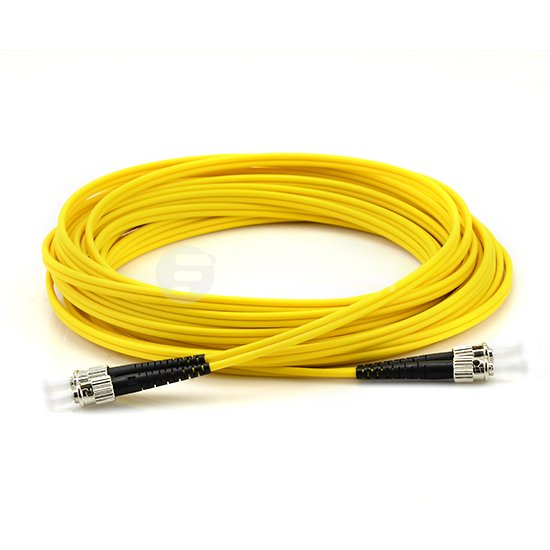How to Manage Fiber Optic Patch Cords?
With the greatly increasing demand for high-speed enterprise networks, fiber optic patch cords with high density are needed. And with the limited space available in wiring closets and equipment rooms, fiber optic patch cord management is very crucial. Generally, good fiber optic patch cord management can not only achieve optimum performance and reliability, but also minimize costs related to moves, adds and changes. Usually there are four parts in fiber optic patch cord management, including planning, preparation, patching, and validation. This article will illustrate how to manege fiber optic patch cords from these four aspects.

Before making cabling decisions, you need to obtain all necessary information about your cabling infrastructure. As is known to all, different fiber cablings have different specifications and design demands. So your fiber patch cords must match the installed cabling. First of all, choosing a cord of the correct length, which determines the best route between its points of connection. Once having established the best route for the cord, you can figure out the required length by adding the horizontal and vertical distances. And choose fiber optic patch cords with correct connector types. There are many kinds of fiber optic patch cables with different connectors, such as LC patch cable, SC patch cable, ST patch cable (as shown in following picture), etc. Next avoid excessive slack and provide a neat appearance when selecting a cord to make a cross connection. Finally, ensure you have cords of the right length available and that panels are fitted with correct cable management accessories. In general, a horizontal patch cord management guide is needed for every two rack units, depending on the type of optical patch panel or lightguide interconnect unit (LIU).

The preparation before performing administration activities is very essential, which can minimize disconnect time. Good preparation includes administrative records study, cord inspection, and cleanliness. Firstly, you should locate the ports that must be connected or reconnected and ensure technicians have clear information on what they need to do, including labeling information for the ports involved. Then you need to ensure fiber optic patch cords are of the right type and inspect them for physical damage, such as stress marks from bending on the sheath, pullout of fibers from the connector and cracks or scratches on fiber end. Finally, since cleanliness is vital in fiber optic connections, so special care is needed to ensure that fiber optic patch cords are clean and in good condition. That is to say, you should pay attention to the cleanliness of connector ends on patch cords, connector ends on panels, and connector ends on network equipment.
Kinks, snags, pinches and poor contacts can dramatically reduce the performance of fiber patch cords. To avoid these problems during the patching process, there are four factors you should take into consideration: bend radius, cord pulling and stress, bundling, and routing cords. Firstly, the minimum bend radius of fiber optic patch cords varies with cord diameter. So you should have an understanding of bend radius for different fiber optic patch cords. Then be careful not to use excessive force in the course of the patching process. This can stress cords and connectors, reducing their performance. Thirdly, when bundling fiber cords, do not tighten ties beyond the point where individual cords can rotate freely. Use only products manufactured for this purpose, and consider the use of products that can be reused without the use of tools. Finally, if the existing cord is the right length, it may be possible to reuse it. If this is the case, remove the cord completely and rerun it in through the cable pathways. This is the only sure way to ensure there are no tangles, kinks or strains.
After making the appropriate patching, it is the time to make a final visual check on connections. When patch panels are mounted in enclosures, ensure they are securely closed and locked, making sure that cord slack is not snagged or pinched by the doors. The final step is to update the documentation to the as-built configuration and close the work order associated with the completed change request.
A strong and reliable fiber optic patch cord management can increase the reliability and flexibility and decrease the cost of network operation and maintenance. When managing your fiber optic cords, you should follow the above four steps: planning, planning, preparation, patching, and validation. Only by obeying these four aspects strictly can a successful fiber optic patch cord management be obtained.



/http%3A%2F%2Fwww.fiber-optical-networking.com%2Fwp-content%2Fuploads%2F2016%2F06%2FGLC-SX-MMD.jpg)
/http%3A%2F%2Fwww.fiber-optic-solutions.com%2Fwp-content%2Fuploads%2F2016%2F06%2FCisco-100BASE-FX-SFP-module.jpg)
/http%3A%2F%2Fwww.fiber-optical-networking.com%2Fwp-content%2Fuploads%2F2016%2F06%2FCisco-40GBASE-LR4-QSFP-Transceiver.jpg)
/http%3A%2F%2Fwww.fiber-optical-networking.com%2Fwp-content%2Fuploads%2F2016%2F06%2FLC-to-SC-single-mode-fiber-patch-cable.jpg)